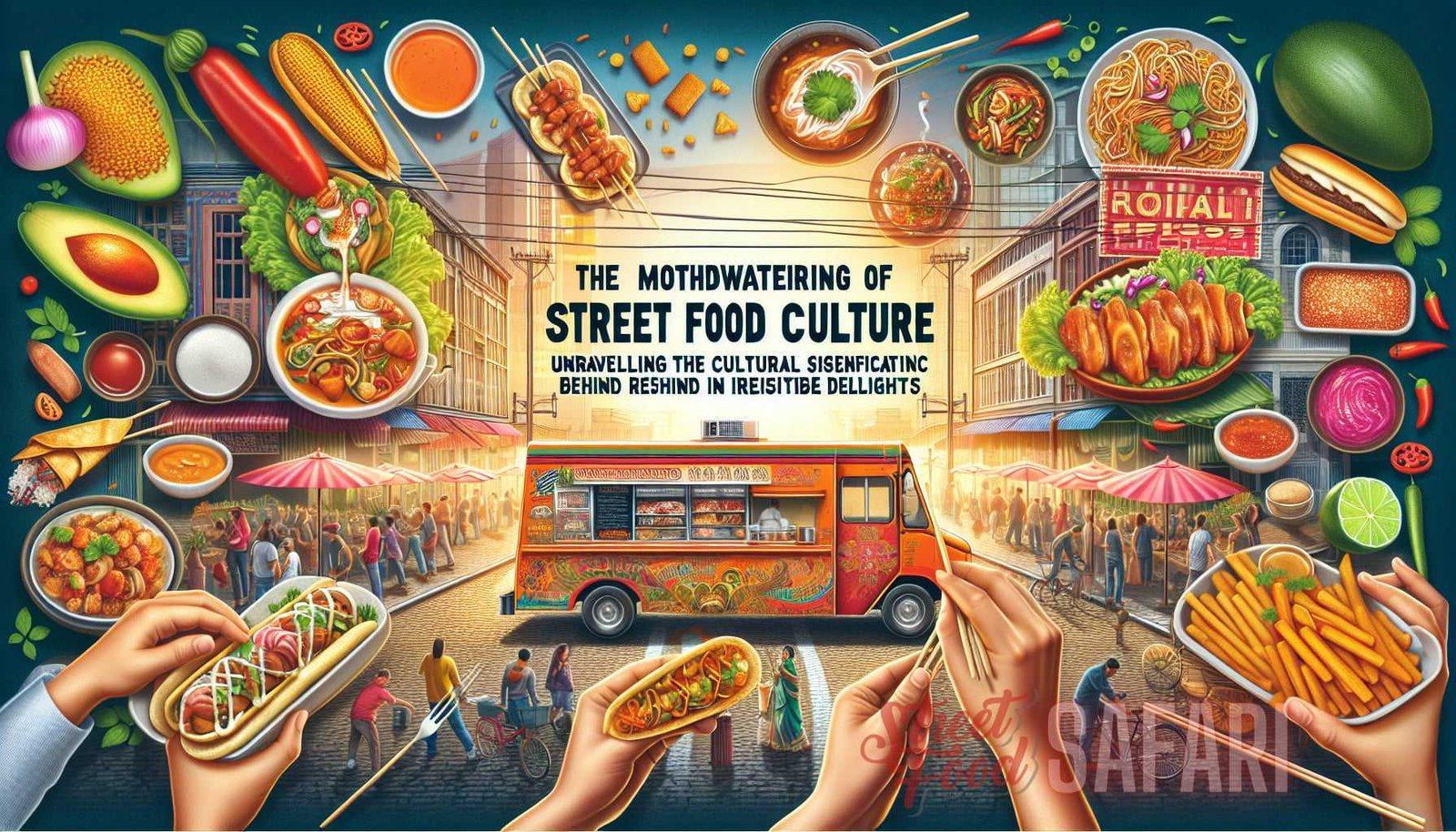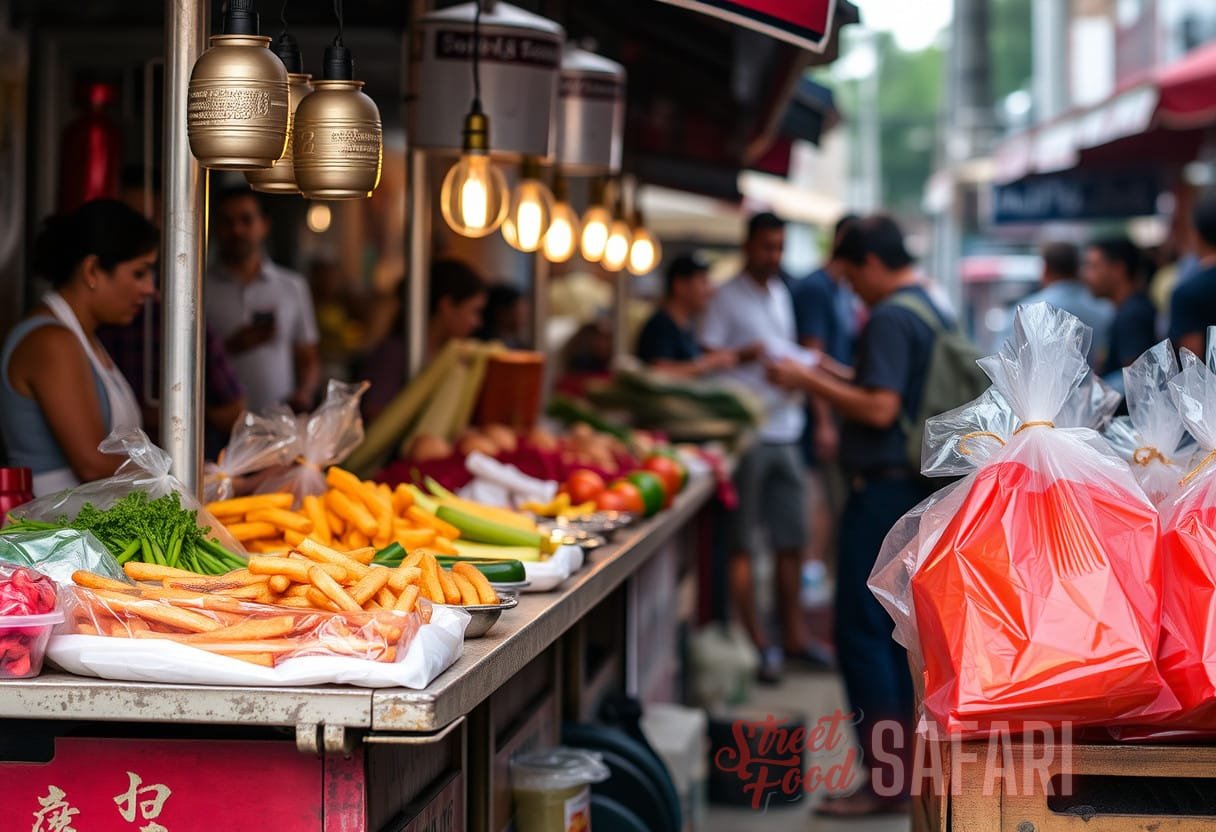The Cultural Significance of Street Food: A Gastronomic Revolution
Street food has long been a staple of culinary traditions around the world. From the bustling streets of Bangkok to the vibrant food markets of Mexico City, street eats have become synonymous with the cultural fabric of communities globally. The sheer variety and flavors offered by street food vendors are a testament to the rich culinary heritage of different regions, making street food an essential part of food culture worldwide. This article explores the cultural significance of street food, showcasing its historical roots, social impact, and the diverse flavors that have captivated the palates of millions.
Historical Origins of Street Food

Street food’s historical origins can be traced back thousands of years. In ancient civilizations such as Rome, Greece, and China, street food was an integral part of daily life. Food stalls and carts lined the streets, offering convenient and affordable meals to the masses. The accessibility of street food made it a popular choice among both the rich and the poor.
Street food also played a significant role in ancient trade routes. As merchants traveled long distances, they relied on street food vendors for sustenance. This exchange of culinary knowledge and ingredients between different cultures contributed to the rich tapestry of flavors found in street food today.
Over time, street food evolved alongside urbanization and cultural changes. In the Middle Ages, street food vendors became a common sight in European cities. Their main clientele were laborers and travelers who needed quick and cheap meals. The popularity of street food continued to grow, and by the 19th and 20th centuries, street food became a fundamental aspect of urban life in cities such as New York, Hong Kong, and Mumbai.
The Social Impact of Street Food
Street food goes beyond being just a source of sustenance; it plays a pivotal role in the social fabric of communities. In many cities around the world, street food vendors serve as cultural ambassadors, showcasing the flavors and traditions of their respective regions. They contribute to a sense of pride and identity, creating a connection between locals and their food heritage.
Street food also fosters a strong sense of community. Street food vendors often become fixtures in their neighborhoods, forming personal relationships with their customers. The vibrant atmosphere surrounding street food stalls creates a space for people to come together, fostering a sense of unity and camaraderie.
Furthermore, street food provides economic opportunities for marginalized communities. Many street food vendors are micro-entrepreneurs, using their culinary skills to support themselves and their families. The affordability of street food also allows people from all socioeconomic backgrounds to enjoy delicious meals without straining their budgets.
The social impact of street food extends beyond local communities. In recent years, street food has gained international recognition as a cultural phenomenon. Food festivals and street food markets have become popular tourist attractions, drawing visitors from around the world to experience the diverse flavors and culinary traditions offered by street food vendors.
The Resurgence of Street Food
In the past decade, street food has experienced a resurgence in popularity globally. This resurgence can be attributed to various factors:
- Food Tourism: Travelers are increasingly seeking authentic culinary experiences, and street food offers a window into a region’s food culture like no other. The rise of social media platforms has also contributed to the popularity of street food, as people share their gastronomic adventures online.
- Chef-driven Street Food: Many renowned chefs are now turning their attention to street food. By elevating traditional street food dishes with a modern twist, these chefs bring a new level of creativity and sophistication to the street food scene.
- Food Safety Regulations: Governments and municipalities have recognized the importance of street food vendors and have implemented regulations to ensure food safety and hygiene. This has increased consumer confidence in street food, leading to its growing popularity.
In cities like London, Singapore, and Los Angeles, the street food scene has become a thriving industry, with dedicated markets and festivals celebrating the diverse flavors and talents of street food vendors.
Global Flavors: The Diversity of Street Food
One of the most captivating aspects of street food is the incredible diversity of flavors and culinary traditions it encompasses. Each region has its unique street food specialties, reflecting the local ingredients, cultural influences, and cooking techniques. Here are just a few examples:
1. Mexico
Mexico is a street food paradise, with a myriad of vibrant flavors to explore. Tacos, tamales, and elote (grilled corn) are just a few must-try dishes. The combination of spicy salsas, fresh herbs, and diverse meats makes Mexican street food a truly unique experience.
2. Thailand
Thai street food is renowned for its bold and aromatic flavors. From the iconic Pad Thai to the fiery Tom Yum soup, Thai street food captures the essence of the country’s cuisine. Street food markets such as Bangkok’s Chatuchak Market offer a sensory overload of flavors and aromas.
3. India
Indian street food is a treasure trove of flavors and textures. From the savory chaat (snacks) like pani puri and pav bhaji to the sweet treats like jalebi and kulfi, Indian street food caters to every palate. The use of spices and regional specialties adds depth and complexity to the cuisine.
4. Japan
In Japan, street food takes on a whole new level of sophistication. From the ubiquitous takoyaki (octopus balls) to the savory okonomiyaki (cabbage pancake), Japanese street food combines simplicity with incredible taste. The emphasis on fresh ingredients and attention to detail make Japanese street food a culinary delight.
The Future of Street Food
As street food continues to captivate food enthusiasts worldwide, its future is brimming with possibilities. Here are a few trends that may shape the future of street food:
- Fusion Flavors: The blending of different culinary traditions is a trend gaining momentum in the street food scene. Chefs are putting their unique twists on traditional dishes, creating fusion flavors that reflect the evolving tastes of consumers.
- Sustainability: With an increased focus on sustainability, street food vendors are exploring eco-friendly practices. From using locally sourced ingredients to implementing compostable packaging, street food is embracing a more environmentally conscious approach.
- Virtual Food Experiences: The rise of food delivery platforms and virtual kitchens has given street food vendors new avenues to reach customers. Online platforms allow vendors to showcase their culinary creations to a broader audience, further expanding the reach of street food.
As the global food culture evolves, street food will undoubtedly continue to play a crucial role. Its cultural significance, social impact, and diverse flavors make street food an enduring symbol of culinary heritage and innovation.
For more information on the cultural significance of street food, check out the following articles:
1. The Street Cuisine Revolution: Exploring the Dynamic Evolution of Food Culture
2. Embark on a Flavorful Street Food Journey: Exploring Global Culinary Traditions
In conclusion, street food’s cultural significance cannot be overstated. Its historical roots, social impact, and diverse flavors have made it an integral part of food culture worldwide. From the vibrant streets of Mexico City to the bustling markets of Bangkok, street food continues to be a gastronomic revolution that brings people together, celebrates local traditions, and tantalizes taste buds.
For more in-depth information on street food, you can visit the Wikipedia page on Street Food.



